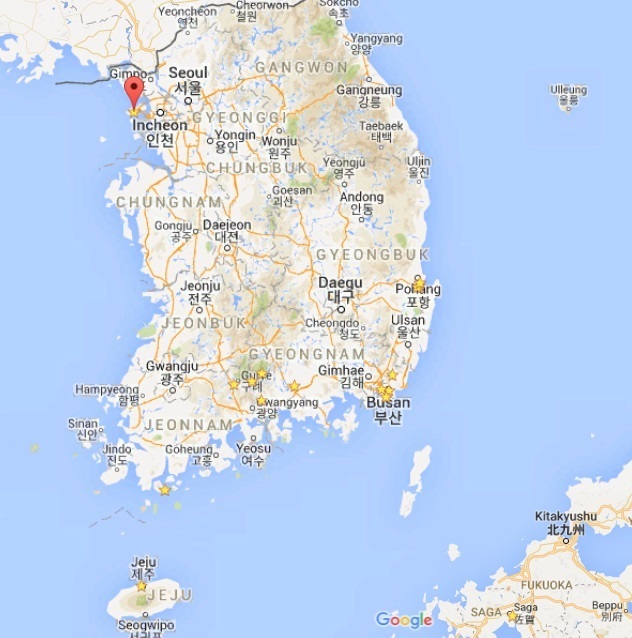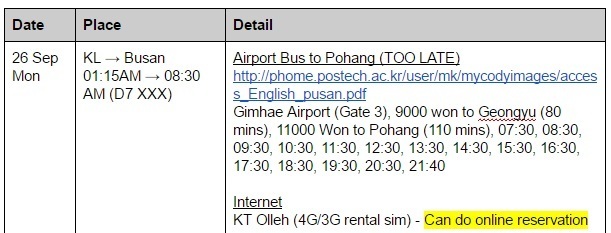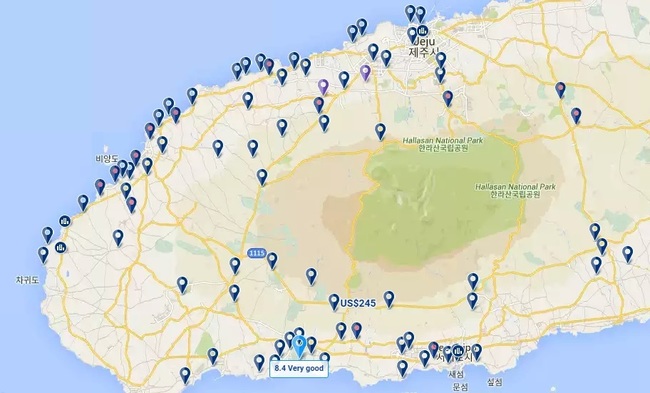How to plan for DIY Travel
DIY Travel: to travel freely without guided tour and relying on public transport.

Select a destination #
The first thing to do is select a destination (I shall give a Malaysia perspective). If budget is a constraint, you can go for Thailand, Indonesia, Cambodia or Vietnam. If you like comfort, you can opt for Japan, South Korea, Taiwan, Hong Kong, Australia or New Zealand. If you have more money and would like to go far: Europe. If you are more adventurous: Nepal, India, etc.
I was thinking of Japan because it’s comfortable and nice country to visit to (though a bit pricy), but opt for South Korea instead because my wife and I haven’t been there before and it’s slightly more affordable than Japan.
Book a flight #
Booking air ticket is an important gesture to kick-start the planning process in motion, as there is “no turning back”.
As a Malaysian, I tend to stick with AirAsia due to its affordability. Those who wanted a bit more leg space and comfort, feel free to seek others.
Most country has only one major international airport (one less headache), but South Korea has two: Incheon International Airport at Seoul and Gimhae International Airport at Busan. Search for the airports in Google Maps and you will notice Seoul is at north-west and quite far away from Busan in the south-east.

Since I plan to visit both cities and I don’t want to waste time and money on logistic, I shall arrive and depart from different airports. Which one shall I choose for arrival and departure? My wife would prefer to do some shopping before our trip end (we don’t want to lug the shopping items along our trip), so we opt to arrive in Busan and depart from Seoul (the bigger city is always better for shopping) at the end.
Create a Travel Doc (IMPORTANT!) #
I use Google Docs to create the travel plan as it could be easily shared and edited by multiple people. I prefer Docs as compared to Sheets as the layout is more flexible. I put general notes and tips about South Korea at the top, followed by the all-important itinerary table which consist of 3 columns (Date, Place and Detail).

In the Date column I put in the date and day (Mon – Sun), and highlighted any local public holidays in red. It’s very important as we would like to avoid local tourist hotspots during the weekend and public holidays, or at least try to secure advance booking if we indeed have to visit them during this period. I would prefer to stay in the city during peak days as hotels are more available and affordable as compared to vacation town out of the city.
The Place column is very important to show where I will be spending the night (e.g. Seoul), or if I am moving to a different place for the night (Busan –> Seoul). I put places and attractions I shall be visiting in the Detail column. The Date and Place column is very important to facilitate hotel booking and to avoid mistakes.
The Detail column consists of the following:
- Flight arrival and departure time
- Tips for the specific place: e.g. how to get 4G sim card in the airport.
- Logistic: e.g. How to go to the city from the airport, bus or train schedule, cost and duration.
- Accommodation: booking detail or hotel options.
- Activities/Places: A rough idea of attractions I plan to visit or things to do.
- Reminder: Highlight important things must do at specific place or time, like booking a ticket at local station.
This document gives a rough idea of my travel plan with some flexibility for improvising during the actual day. I don’t like setting up detail plan like what exactly to do in the morning, afternoon and night (some even put in exact time like a timetable), but I like having a few favorable options to choose from in case something didn’t work out. I also favorites a few places in Google Maps and Travelopy App so I can easily choose places nearest to me.
Although Google Docs could be easily accessible on smartphone, I always print out a paper copy as it loads faster than smartphone. Besides, sometimes I need to show the details recorded on my paper to others when asking for help (smartphone screen rotation and timeout is a nuisance).
I have try some travel planning website or app, but none of them is useful or flexible enough as compared to a plain document.
Hotel Booking #
I prefer to book hotel with booking.com, as it’s reliable, no hidden fee and very user friendly. Sometimes I might want to select a hotel near the train or bus station as I need to catch an early transport next morning, or I might select a place in the central or shopping district for convenience. Click on the “Show Map” link on booking.com and it allow you to explore available hotels using the map.

Most hotels allow cancellation few days before the check-in date, and payment is usually on the check-in date itself. So, it doesn’t hurt to book early to secure a better rate.
Sometimes I opt for Airbnb (usually for cheaper options, unique accommodations or out of town places), agoda.com or hostelbooker.com as well.
Things to do, Places to visit and Restaurants to try (HOMEWORK!) #
This is the most time consuming part of travel planning. If your travel is around 5 days, it’s pretty easy to copy the itinerary on some blog. If you are planning for weeks and have a different taste than most tourists (hiking, village stay, etc.), you would need to spend a lot of time doing some travel research a.k.a homework.
Google will list out major attractions when you google “Seoul Attractions”, or you could check out TripAdvisor for a rough ideas of available options. TripAdvisor’s restaurant recommendations are tailored for western tourist, so you can’t find much local favourites. Foursquare works pretty well most of the time, but not for South Korea. I will usually mark the places I found interesting on Google Maps for better logistic planning and picking of hotel location.
The next source of information shall be travel blogs by googling for “Seoul travel blog”. I will copy detail of the places into my Travel Doc, save the location to Google Maps and add to favorite on Travelopy. Grinding and reading multiple blogs is pretty time consuming. Most local favorites are hidden in Korean blogs, so it would much better if you could read Korean. Many Taiwanese travelers like to blog about South Korea as well (google “首尔自由行 blog”), so there is a wealth of information if you could read Chinese.
Don’t forget to google about logistic information as well of the places you plan to visit and record them at Travel Doc.
Below are some of the research I have done for Seoul, Busan and Jeju.
Pace of travel #
When I first started DIY travel, I try to cover as many places as possible, which is very tiring and less satisfying. Nowadays, I filter off places which I am less interested in, no matter how popular they are (museum, theme park, temple, etc). I try to visit 1-2 places per day (more places if they are conveniently on the way), spending quality time exploring the places and less time on transport. I try to stay in the same place for minimum of 2 nights (preferably 3 nights) as packing of luggage and moving is very tiring. I took 5-6 trips before I finally learn to slow down the pace and enjoy the travel more.
Besides attractions, I also spend more time to find good restaurants rather than just falling for tourist traps. Whenever possible, I try to find some hiking trail or village stay. South Korea have a surprising number of hiking trail easily accessible for foreign tourist (most of it doesn’t require a permit).
Prior research is very important for DIY travel, as googling on my smartphone while traveling is very tiring and time consuming. This is one of the reason I created Travelopy, where I deposited most of my travel knowledge and information into it. I have written an app to easily access travel information on the go (I used to print out all the information before the app era). Hopefully Travelopy will grow more informative that all of us could spend less time doing travel research and more time enjoying the vacation.
Have fun :)